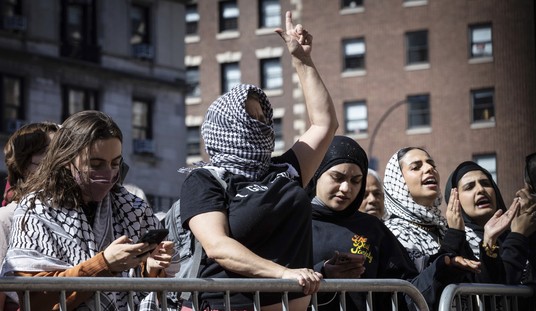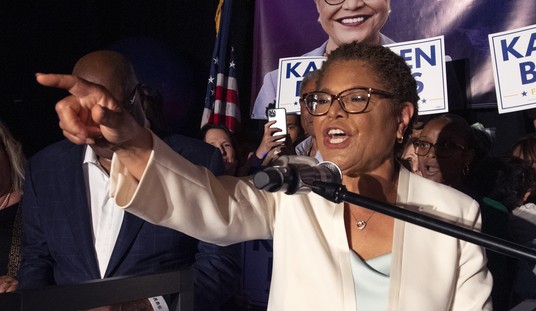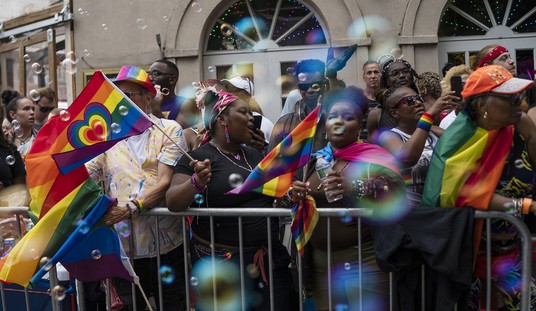If you haven’t noticed, an election is coming up. We’re 16+ months away, and the push is on (again) to tackle the perceived reality that is known as voter discrimination. The Left seems to believe low voter participation must mean the existence of rampant voter discrimination. But you can’t force people to vote, or even care about any of the issues facing our country. With a past that included denying women and minorities the right to vote, you’d think that a present devoid of such systemic discrimination would encourage all of us to exercise our right. You’d think that, but you’d be wrong.
Democrats are seeking to “fix” the 5-4 Supreme Court decision from 2013 regarding Shelby County v. Holder. The ruling struck down a provision in the Voting Rights Act of 1965, signed into law by President Johnson.
The Supreme Court ruled 5-4 that Section 4 of the Voting Rights Act of 1965 was unconstitutional. Section 4 lays out the formulas for how the Justice Department enforces Section 5 of the Voting Rights Act. Section 5 requires that the states identified with a history of discrimination obtain approval from the federal government before they can make changes to their election law. Section 4 formulas as of 2013 mandated that “Alabama, Alaska, Arizona, Georgia, Louisiana, Mississippi, South Carolina, Texas, and Virginia in their entirety; and parts of California, Florida, Michigan, New York, North Carolina, and South Dakota” ask for preclearance for electoral law changes. After Shelby County v. Holder, these states are free to make changes to election law or district maps without approval from the Justice Department.
Democrats like [mc_name name=’Rep. John Lewis (D-GA)’ chamber=’house’ mcid=’L000287′ ] are concerned.
“It’s important to fix a decision of the United States Supreme Court and make it easier, make it simple, for all of our people to participate in a democratic process,” said Rep. John Lewis, one of the sponsors of the bill. “Open it up and let people come in. We’ve got to do it. We’ve got to do it before the next election. We cannot have the long lines, we cannot have the ID’s, we’ve got to do it.”
I was required to show ID to purchase a glass of wine recently, but nevermind that. Racism is alive and well in the form of confirming your identity at your assigned polling place, and making sure that it is indeed you that is casting one vote…for you. It’s also the absolute worst – and probably racist – to have to wait in line to exercise that right. But I digress.
Since states’ rights should be protected, and are increasingly attacked, I support the 2013 ruling. Futhermore, since Section 5 of the almost 50 year old bill focused on states (and in some cases just parts of a state) with a “history of discrimination”, I believe a 2013 review of certain components of the bill was in order. The Supreme Court ruled correctly, a phrase which currently feels odd to type out. We have to be honest in saying the atmosphere of 1965 is quite different from the atmosphere of 2015. We should in no way forget our history, but respond to reality as it is now. In 2015, the privilege of casting a vote is not acted upon by a large percentage of registered voters. This is not because of intimidation at the polls. It is due to laziness and/or a distrust of those in Washington, D.C.
In the most recent elections, voter turnout was been abysmal. For the 2012 presidential election, turnout was reported to be:
…57.5% of all eligible voters, compared to 62.3% who voted in 2008 and 60.4% who cast ballots in 2004. In 2000, the turnout rate was 54.2%. That means 93 million eligible citizens did not cast ballots.
If you think that’s bad, the yawn-inducing tally from 2014’s midterm election was even worse:
…turnout in these midterms was the lowest overall in 70 years. Turnout of the voting-eligible population was just 36.4 percent, according to the projection from the United States Elections Project, run by Dr. Michael McDonald at the University of Florida. That’s down from the 41 percent that turned out in 2010. You have to go all the way back to 1942 for lower numbers when turnout in that midterm was just 33.9 percent. They had a pretty good excuse back then — many adult-age Americans were preoccupied with fighting in a world war.
The preoccupation that too many registered voters have now is apathy. This indifference keeps them from taking time to follow elections, choose their candidates, and make time to vote. Still others assume voting laws in their state – which apply to everyone – are meant to keep minorities away from the polls.













Join the conversation as a VIP Member